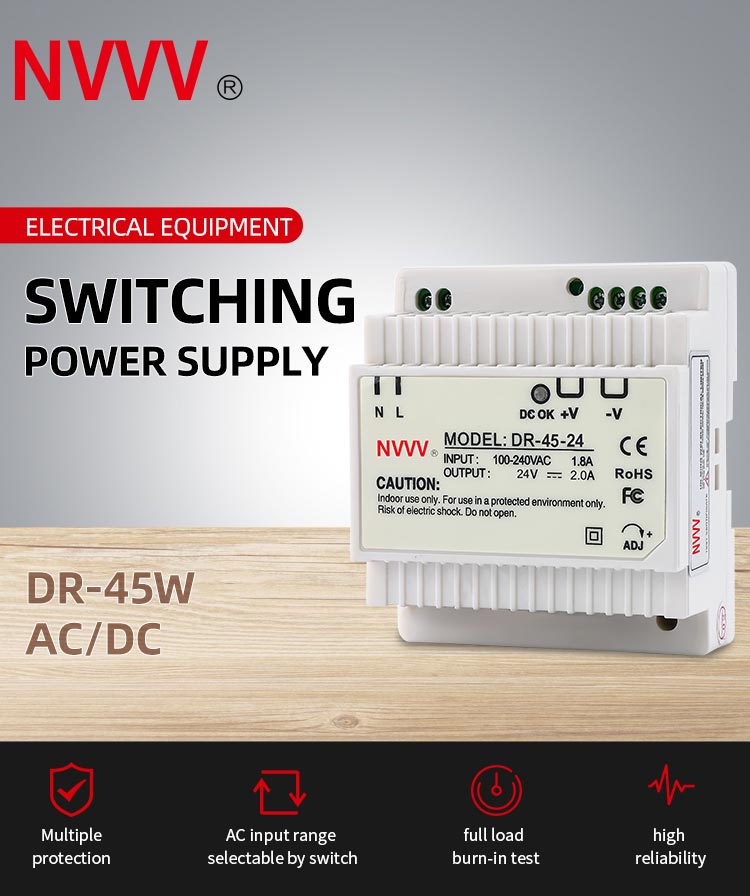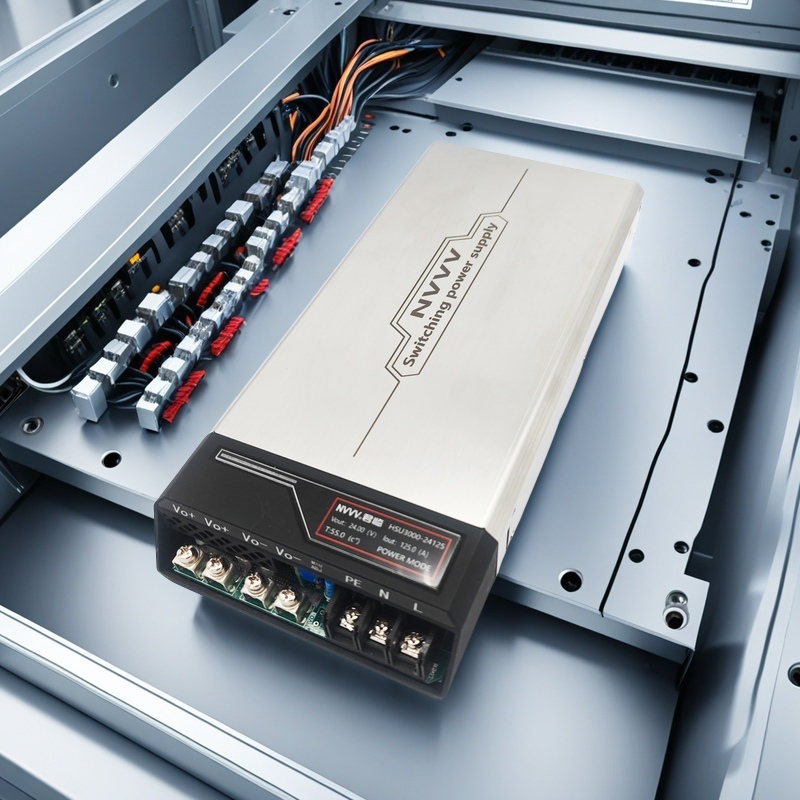Efficient Power Solutions: The Role of SMPS in Modern Lighting Systems
Switch Mode Power Supply has revolutionized the way we power modern electronic devices, offering unmatched efficiency, compactness, and reliability. From powering lighting systems in skyscrapers to ensuring uninterrupted telecommunications and enhancing the performance of consumer electronics, SMPS has become a cornerstone of modern electrical engineering.
In the realm of architectural and commercial lighting, SMPS plays a pivotal role. The high efficiency and compact design of SMPS ensure that lighting systems operate smoothly and cost-effectively, whether it's highlighting the aesthetic features of a building or providing reliable illumination in commercial spaces. Similarly, in the telecommunications sector, the reliability and efficiency of SMPS are indispensable. Telecommunication equipment relies on stable power supplies to maintain continuous operation, and SMPS meets this demand with aplomb.
In this article, we will explore three specific applications of SMPS in detail, examine how SMPS improves energy efficiency in modern electronics, and delve into the key components and functions of SMPS. By the end, you'll have a thorough understanding of why SMPS is a preferred choice for powering modern electronics and how it continues to shape the future of electrical engineering.
What are the applications of SMPS in modern electronic devices?
Switch Mode Power Supplies (SMPS) are ubiquitous in modern electronic devices due to their efficiency, compact size, and versatility. Here are three detailed applications of SMPS:
Lighting Systems in Buildings
Modern buildings often utilize sophisticated lighting systems, including LED strip lights, which require efficient and reliable power sources. SMPS plays a critical role in powering these systems.
Advantages of SMPS in Lighting Systems:
Efficiency: SMPS converts electrical power with high efficiency, reducing energy consumption and heat generation. This is particularly important for large-scale lighting systems where energy savings can be significant.
Stability: SMPS provides a stable and regulated output voltage, ensuring consistent brightness and longevity of LED lights.
Compact Design: The compact size of SMPS allows for easy integration into lighting fixtures and control systems, optimizing space utilization.
Use Cases:
Architectural Lighting: Switching power supply is used to power LED strip lights that highlight architectural features of buildings. The ability to provide stable and efficient power ensures the longevity and consistent performance of these lights.
Commercial Lighting: In commercial buildings, SMPS powers large arrays of LED lights, ensuring energy efficiency and reducing operating costs. The ability to handle varying loads without significant losses makes SMPS ideal for commercial applications.
Emergency Lighting: SMPS provides reliable power for emergency lighting systems, ensuring they function correctly during power outages. The high efficiency and reliability of SMPS make them suitable for critical applications where uninterrupted power is essential.
Telecommunication Equipment
Telecommunication systems require stable and reliable power supplies to ensure uninterrupted service. SMPS is widely used in this field due to its efficiency and reliability.
Advantages of SMPS in Telecommunications:
High Efficiency: Telecommunication equipment operates continuously, making energy efficiency a priority. SMPS minimizes power loss, reducing energy consumption and heat generation.
Compact Size: The compact design of SMPS allows for integration into telecommunication racks and cabinets, optimizing space utilization.
Reliability: SMPS provides a stable power supply, which is crucial for maintaining consistent operation of telecommunication equipment.
Use Cases:
Base Stations: SMPS is used to power base stations that provide cellular coverage. The efficiency and reliability of SMPS ensure continuous operation, even in demanding conditions.
Data Centers: Telecommunication data centers rely on SMPS for power conversion and distribution. The ability to provide stable and efficient power is critical for the operation of servers and networking equipment.
Network Equipment: Routers, switches, and other network equipment use SMPS for power. The compact size and efficiency of SMPS make them ideal for these applications, where space and power efficiency are critical.
Consumer Electronics
SMPS is a key component in many consumer electronics, providing efficient and reliable power conversion for a wide range of devices.
Advantages of SMPS in Consumer Electronics:
Energy Efficiency: Consumer electronics require efficient power supplies to reduce energy consumption and heat production. SMPS meets these requirements, contributing to the energy efficiency of devices.
Compact Size: The small form factor of SMPS allows for integration into compact and portable devices.
Versatility: SMPS can be designed to provide various output voltages, making them suitable for a wide range of consumer electronics.
Use Cases:
Computers and Laptops: SMPS is used in the power supplies of computers and laptops, providing efficient and stable power for these devices.
Televisions and Monitors: Modern LED and OLED televisions use SMPS to power their displays, ensuring consistent performance and energy efficiency.
Mobile Chargers: SMPS technology is used in mobile phone chargers, providing efficient and compact power conversion. The ability to provide different charging voltages for various devices makes SMPS ideal for this application.
How Does SMPS Improve Energy Efficiency in Modern Electronics?
Energy efficiency is a critical factor in modern electronics, and the swiched mode power supply significantly contributes to improving it. Here's a detailed look at how SMPS achieves high energy efficiency.
Efficiency Mechanisms:
High-Frequency Operation: SMPS operates at high frequencies, reducing the size of inductors and capacitors, which in turn minimizes energy loss.
Pulse Width Modulation (PWM): PWM allows precise control of the output voltage, improving efficiency by reducing the energy wasted as heat.
Feedback Mechanisms: Advanced feedback mechanisms in SMPS ensure the output voltage remains stable, reducing power loss due to voltage fluctuations.
Impact on Devices:
Reduced Heat Generation: By minimizing energy loss, SMPS reduces heat generation, which is crucial for maintaining the longevity and performance of electronic devices.
Lower Energy Consumption: Efficient power conversion reduces the overall energy consumption of devices, contributing to lower electricity bills and environmental impact.
Improved Device Performance: Stable and efficient power supply ensures consistent performance of electronic devices, preventing issues such as flickering in displays and fluctuations in performance.
Applications:
Household Appliances: SMPS is used in refrigerators, washing machines, and other household appliances to improve energy efficiency and reduce operational costs.
Portable Electronics: Mobile phones, tablets, and other portable devices benefit from the efficiency of SMPS, leading to longer battery life and reduced charging times.
Industrial Equipment: In industrial settings, SMPS is used to power machinery and equipment, enhancing efficiency and reducing energy costs.
What Are the Key Components of SMPS and How Do They Function?
Understanding the key components of SMPS and their functions provides insight into how these power supplies achieve their efficiency and reliability.
Components:
Transformer: In SMPS, transformers operate at high frequencies, which reduces their size and weight compared to traditional transformers. They play a crucial role in stepping up or stepping down the voltage.
Rectifier: The rectifier converts AC input to DC. In SMPS, high-speed rectifiers are used to improve efficiency and reduce power loss.
Filter: Filters are used to smooth out the rectified voltage, reducing ripple and noise. High-frequency filters in SMPS are smaller and more efficient.
Switching Device: Transistors (such as MOSFETs) are used as switching devices in SMPS. They operate at high frequencies to control the flow of current through the transformer.
Control Circuit: The control circuit regulates the output voltage by adjusting the switching frequency and duty cycle. Advanced control circuits ensure the stability and efficiency of the SMPS.
Functions:
Transformer: The high-frequency transformer is central to the operation of swiching mode power supply. It isolates the input and output while converting voltage levels. The high operating frequency allows the use of smaller transformers, enhancing efficiency and reducing size.
Rectifier: The rectifier converts the high-frequency AC from the transformer to DC. High-speed rectifiers are used to minimize losses and improve efficiency.
Filter: Filters are essential for reducing ripple and noise in the output voltage, ensuring a smooth and stable DC output. The high-frequency operation allows for the use of smaller and more efficient filters.
Switching Device: The switching device, usually a MOSFET, rapidly switches the current flow through the transformer, controlling the power conversion process. High-speed switching reduces energy loss and improves efficiency.
Control Circuit: The control circuit monitors the output voltage and adjusts the switching frequency and duty cycle to maintain a stable output. Advanced control algorithms improve the response time and accuracy of voltage regulation.
Applications:
Computers: SMPS is used in computer power supplies to convert AC to the various DC voltages needed by components. The efficiency and stability of SMPS ensure reliable computer operation.
Telecommunications: SMPS powers telecommunications equipment, ensuring reliable operation and reducing energy costs. The compact size and efficiency are particularly advantageous in space-constrained environments.
Medical Devices: SMPS is used in medical equipment, providing efficient and reliable power. The stability of SMPS is critical for the accurate operation of sensitive medical devices.
Conclusion
As we move towards a future that increasingly relies on electronic devices and systems, the role of efficient and reliable power supplies like SMPS becomes ever more critical.Whether you are involved in designing lighting systems for modern buildings, maintaining telecommunications infrastructure, or developing consumer electronics, the insights provided in this article will equip you with the knowledge to make informed decisions about power supply solutions. Embracing the efficiency and reliability of SMPS will not only improve your systems' performance but also contribute to a more sustainable and energy-efficient future.









